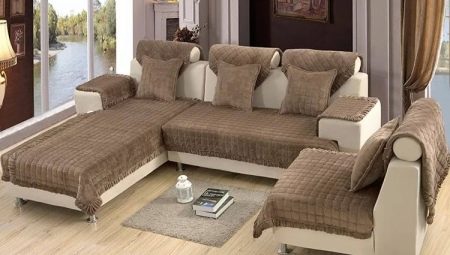The purchase of upholstered furniture is a responsible event that requires significant financial investments, therefore, every housewife tries to maximize the life of the interior. Help in solving this problem can special fabric wraps - sofas. Popular textiles are made by both Turkish and European manufacturers. Let us consider in more detail the varieties and tips for choosing divandeks for a sofa.
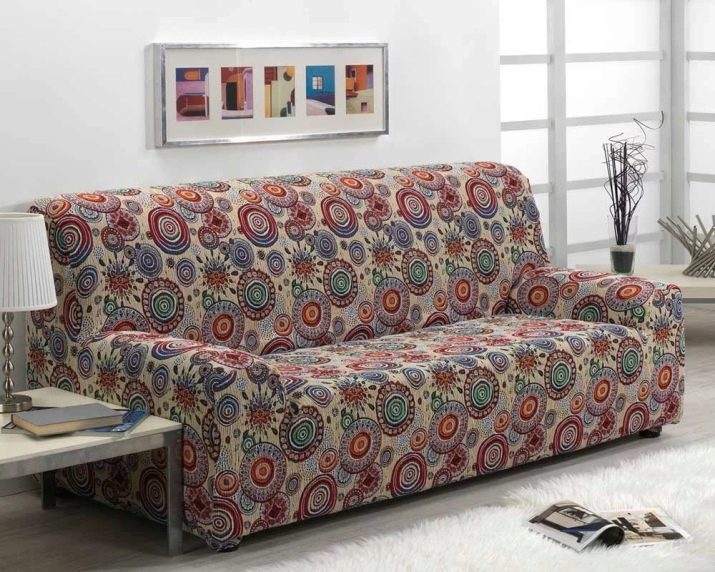

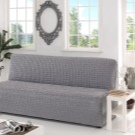


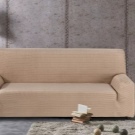
Features
Divandek is a special cloak for sofas and armchairs that protects their surface from dirt and mechanical damage. Thanks to a wide range of products, customers can choose a product of various textures, colors and sizes. Like any thing, sofas have their positive and negative characteristics.
Their advantages are as follows:
- aesthetic decoration of the room;
- wide color and texture range;
- attractive appearance;
- wide price range;
- the presence of additional decor;
- manufacturing using various techniques;
- the possibility of manufacturing to order.
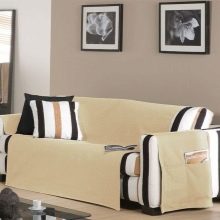

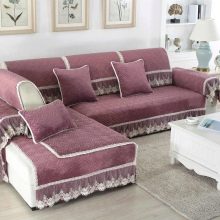
Like any piece of furniture, sofas have negative sides that are directly related to the type of material.
Wraps made of artificial fabrics accumulate static electricity, and spools form on their surface. Divandeks made of natural material have a short service life and can change their color scheme after washing or under the influence of the sun.
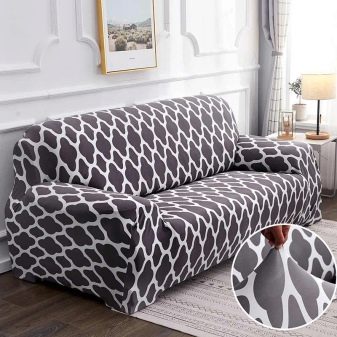
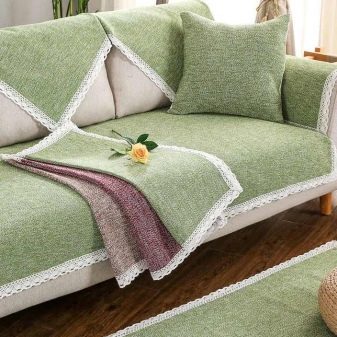
Kinds
Despite the wide range of this type of textile, manufacturers produce models of two forms.
- Straight. Direct-shaped products are the most popular models that are produced in accordance with the standard dimensions of upholstered furniture. This product can be purchased as individual copies, and sets consisting of wraps on the sofa and two chairs. Advantages - the availability of acquisition, a wide range of sizes and colors. Classic sofas can cover both a triple sofa and furniture without armrests.
- Corner Such sofas are a non-standard product, which can consist of one part or several. It is very difficult for owners of exclusive soft corners to choose the exact size, so designers recommend making their own wraps or ordering them in special sewing workshops.
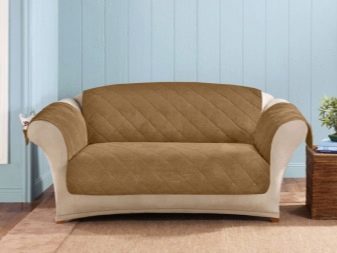
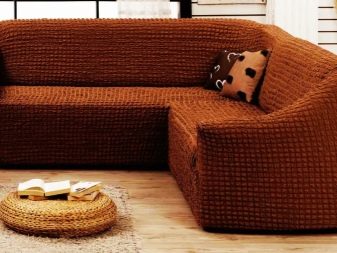
Particular attention should be paid to models with fixing rubber, which provide the most tight fit, which guarantees hollow protection against the penetration of dust and dirt.
Advantages - an exact match with the parameters of furniture, a stylish and effective appearance, an extended period of operation, reliable fixation, ease of maintenance, a wide range of models.
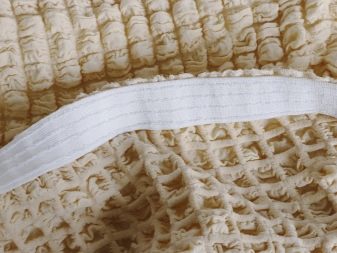

Materials and colors
Production material is one of the most important indicators on which the style, appearance and durability of the product depend. Given the increased demand for textile wraps, as well as various customer requirements, manufacturers make sofas from a wide range of textile materials. Consider the most popular and sought after material.
- Carpet - a fabric consisting of cotton and polyester. Advantages - ease of maintenance, lack of static electricity, soft texture, high level of air exchange, minimal accumulation of dirt. The disadvantage is a short period of operation.
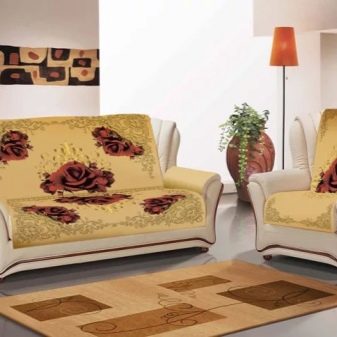
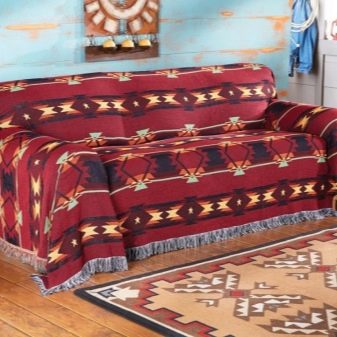
- Velours - the most common material, which can be either looped (dense and velvety), and split (bilateral). Advantages - a pleasant fleecy structure, ease of maintenance, the ability to carry out dry cleaning, the absence of accumulations of dirt and dust, elasticity, long-term preservation of the form, the absence of allergic components, a wide range of colors. Disadvantages - the need to wash the entire product even when a small spot appears. The most popular are velor fringe sofas.


- Natural fur - expensive material that is used only to create exclusive models. To reduce the cost of the product, manufacturers often replace natural fur with artificial fur. Advantages - long-term preservation of cleanliness, soft texture, a long period of operation, a visual increase in the surface of furniture, emphasizing the status, a wide range, a variety of colors. Disadvantages - a possible allergy to synthetic fibers.
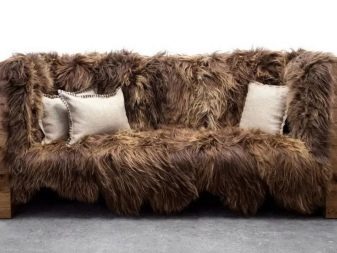
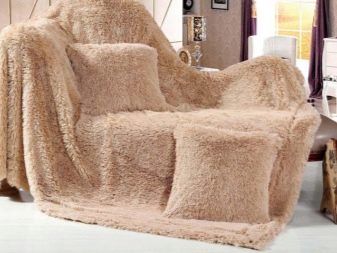
- Acrylic - The most common material, which has several advantages. Advantages - shape retention during repeated cleaning, resistance to abrasion, automatic washing, wide color gamut, lack of allergic components, pleasant texture, warming effect, resistance to fading under the influence of ultraviolet radiation. Disadvantages - the appearance of pellets, the accumulation of static electricity, a change in shape during prolonged use.
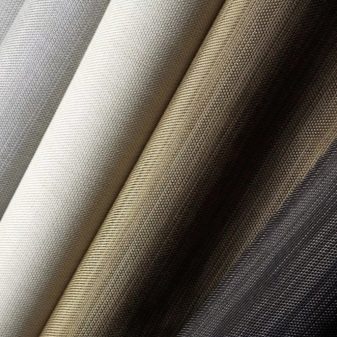
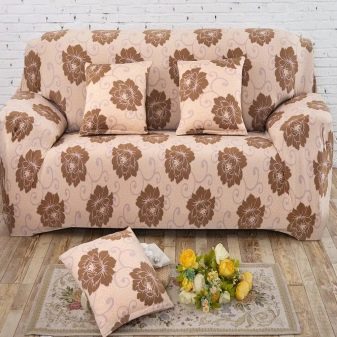
- Shenill - A fabric that consists of both artificial and natural threads. It has a structure similar to velveteen. Advantages - resistance to abrasion, high density, ease of maintenance, the ability to clean with a vacuum cleaner and washing in an automatic washing machine with the addition of various detergents, resistance to fading, long-term preservation of color and brightness, lack of pellets, soft and pleasant texture. Disadvantages - the appearance of mechanical damage, low resistance to moisture.

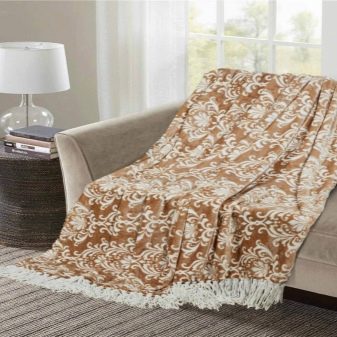
- Microfiber - A new type of material that is increasingly gaining popularity.Advantages - a long period of operation, practicality, the absence of pellets, preservation of color and brightness, does not cause allergic rashes, a pleasant texture, the presence of a warming effect. Disadvantages - the need for regular vacuum cleaning to remove dangerous microorganisms.

- Plush - soft tissue, which can provoke allergic rashes. Advantages - durability, wear resistance, effective appearance, ease of care.
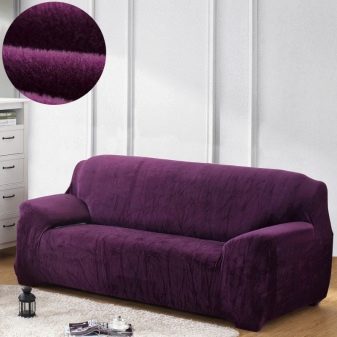
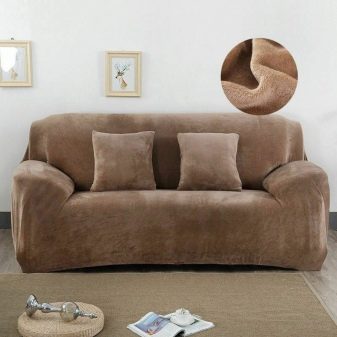
- Jacquard - refined and effective material, which has a dense and textured weave. Advantages - hiding the mechanical defects of furniture, long-term preservation of shape, natural composition, durability, resistance to abrasion. Disadvantages - high price.
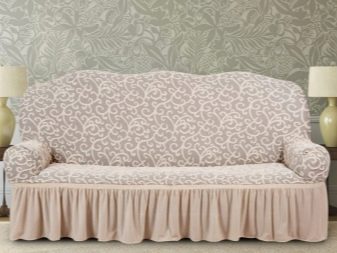
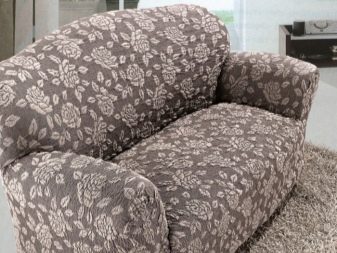
- Cotton - A natural material that is completely hypoallergenic and environmentally friendly. Advantages - a pleasant tactile effect, the absence of static electricity, unhindered circulation of air flows, the possibility of washing in a washing machine. The disadvantage is fragility, low resistance to friction.
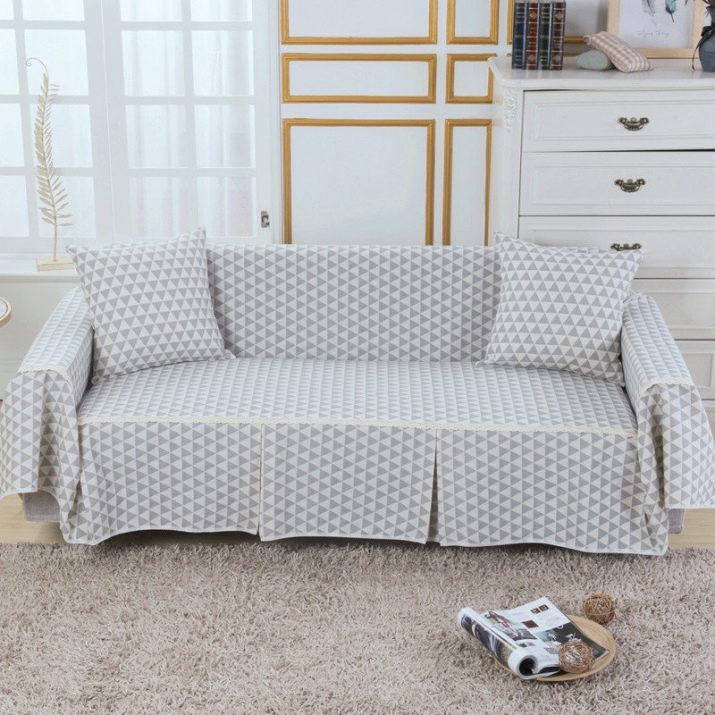
- Tapestry - dense expensive material that is used to decorate the premises in retro, modern and Empire style. Advantages - durability, expensive appearance, natural composition, strength, wide range. Disadvantages - the tendency to burnout.
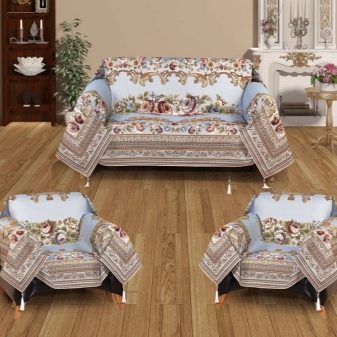
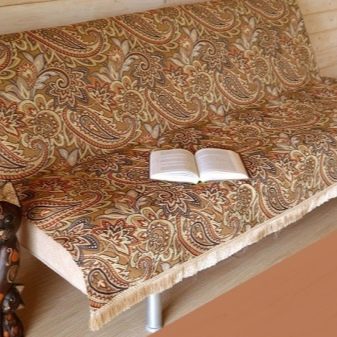
Modern equipment and innovative technologies have allowed manufacturers to produce sofas in a wide range of colors. The following shades are the most popular:
- purple;
- green;
- light green;
- turquoise;
- Orange;
- yellow;
- burgundy;
- blue;
- beige;
- blue;
- grey.
Most of the products have a multi-colored color and graphic pattern. Despite the wide range of colors, the selected product should be in harmony with the general style of the room and its purpose (bedroom, living room, children's room).
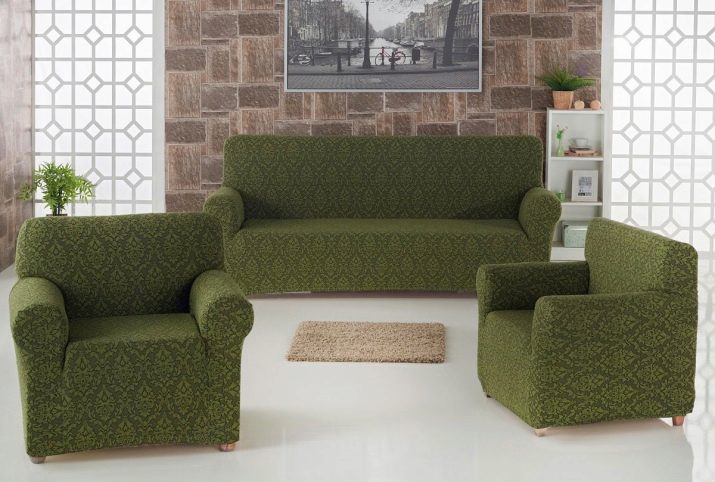
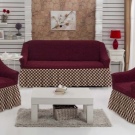
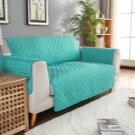
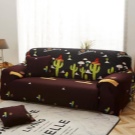
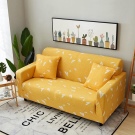
Manufacturers
Divandeks are a popular textile group, which is produced by manufacturers from around the world. In retail chains you can see European, Russian, Chinese, Indian, Turkish and Belarusian products that differ in color, quality and price range. Designers recommend paying attention to the following brands:
- VLADI (Russia);
- Cleo, Tango (China);
- Arya (Turkey);
- "Fleece" (Ukraine);
- Luxberry (Russia);
- TOGAS (Greece);
- Valtery (China).

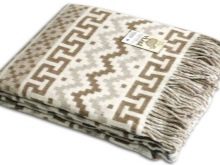
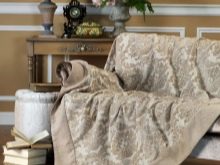
The list of manufacturers is incomplete and is constantly updated with new trademarks.
Care Tips
In order for the purchased product to serve for more than one year, and also throughout the entire period of operation to maintain an attractive and well-groomed appearance, it is necessary to pay attention not only to its choice, but also to operation and maintenance.
Manufacturers indicate complete information on cleaning methods and temperature conditions on special labels.
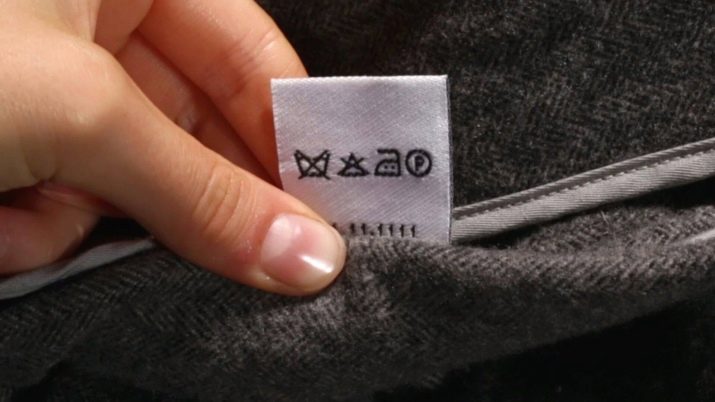
Experienced housewives recommend following these recommendations:
- regular shaking and knocking out microfiber products;
- washing synthetic fabrics at a temperature not exceeding +30 degrees;
- the use of detergents and stain removers in strict accordance with the type of fabric;
- cleaning of fur covers only in conditions of professional dry cleaning;
- washing in an automatic washing machine only in delicate mode;
- for washing large divandeks it is better to use the manual method;
- to prevent deformation, the automatic spin should be kept at minimum speed, and manual twisting should be avoided altogether;
- drying of products should be carried out on a flat horizontal surface;
- to preserve the color and saturation of the colors during drying, avoid direct sunlight.
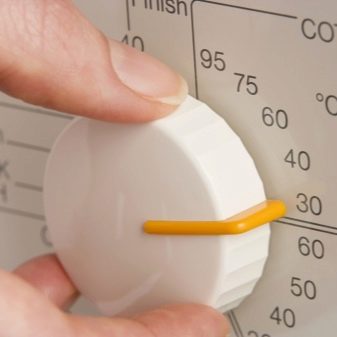
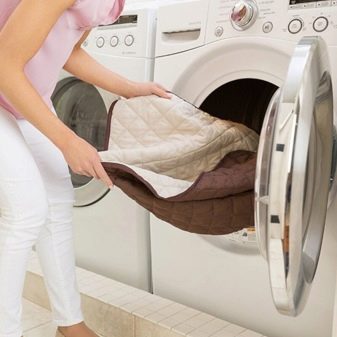
Beautiful examples
Due to the wide color gamut of divandeks, designers are happy to use them when decorating a room, and its material must match the style of the room
- A plain gray cotton cloak will harmoniously fit into a minimalist eco-interior.

- Soft beige ivy on a light sofa will not only protect the furniture, but also give the room sophistication and comfort.
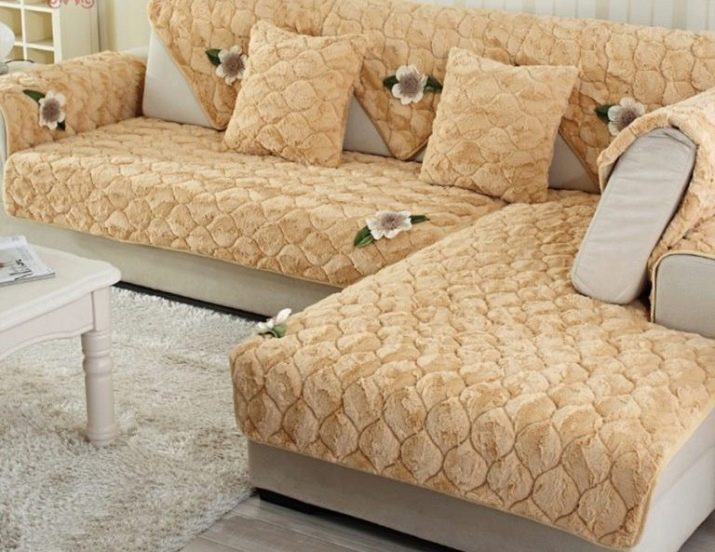
- A fur set of wraps will help to create a comfortable atmosphere in the winter and give the room sophistication and high cost.

See how to sew a cover on a sofa with your own hands.
